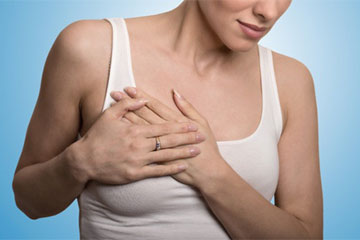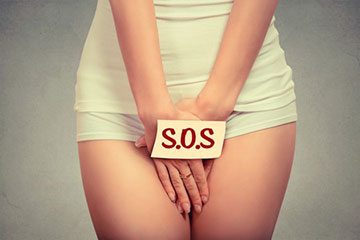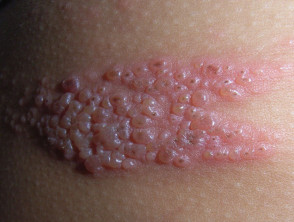Update on Influenza A (H1N1) 2009 Monovalent Vaccines
On September 15, 2009, four influenza vaccine manufacturers received approval from the Food and Drug Administration for use of influenza A (H1N1) 2009 monovalent influenza vaccines in the prevention of influenza caused by the 2009 pandemic influenza A (H1N1) virus.* Both live, attenuated and inactivated influenza A (H1N1) 2009 monovalent vaccine formulations are available; each contains the strain A/California/7/2009(H1N1)pdm. None of the approved influenza A 2009 (H1N1) monovalent vaccines or seasonal influenza vaccines contains adjuvants (1--5). CDC's Advisory Committee on Immunization Practices has made recommendations previously for which persons should be the initial targets for immunization with influenza A (H1N1) 2009 monovalent vaccines and has issued guidelines on decisions for expansion of vaccination efforts to other population groups (6). Children aged 6 months--9 years receiving influenza A (H1N1) 2009 monovalent vaccines should receive 2 doses, with doses separated by approximately 4 weeks; persons aged =10 years should receive 1 dose (1--4).
The approved age groups for use of inactivated influenza A (H1N1) monovalent influenza vaccines differ by manufacturer (table). Three manufacturers that produce inactivated vaccines approved for prevention of seasonal influenza (6) also produce formulations of influenza A (H1N1) 2009 monovalent influenza vaccines. Vaccine produced by CSL Limited is approved for use in persons aged =18 years (1), vaccine produced by Novartis Vaccines and Diagnostics Limited is approved for persons aged =4 years (2), and vaccine produced by Sanofi Pasteur, Inc. is approved for persons aged =6 months (3). A live attenuated influenza vaccine (LAIV) manufactured by MedImmune LLC is approved for persons aged 2--49 years (1). The 2009 (H1N1) monovalent LAIV has the same age range for use as the seasonal LAIV and should not be used to vaccinate children aged <2 years, adults aged >49 years, pregnant women, persons with underlying medical conditions that confer a higher risk for influenza complications, or children aged <5 years old with one or more episodes of wheezing in the past year (5).
Influenza A (H1N1) 2009 monovalent vaccine approvals were made on the basis of standards developed for vaccine strain changes for seasonal influenza vaccines, adherence to manufacturing processes, product quality testing, and lot release procedures developed for seasonal vaccines. The age groups, precautions, and contraindications approved for the influenza A (H1N1) 2009 monovalent vaccine are identical to those approved for seasonal vaccines. All influenza vaccines available in the United States for the 2009--10 influenza season are produced using embryonated hen's eggs and contain residual egg protein.
Preliminary data indicate that the immunogenicity and safety of these vaccines are similar to those of seasonal influenza vaccines. An immunogenicity study of an inactivated influenza A (H1N1) monovalent vaccine manufactured by CSL Limited (Parkville, Victoria, Australia) demonstrated that by day 21 after vaccination, antibody titers of 1:40 or more (hemagglutination-inhibition assay) were observed in 116 (97%) of 120 adults who received the 15 µg dose. Local discomfort (e.g., injection site tenderness or pain) was reported by 46% of subjects, and one or more systemic symptoms (e.g., headache, malaise, or myalgia) by 45% of subjects (7). This safety profile is consistent with results from studies of the seasonal influenza vaccine manufactured by CSL Limited (8). In studies of other seasonal inactivated influenza vaccines, rates of adverse events were not significantly different from placebo injections except for arm soreness and redness at the injection site (9). The National Institute of Allergy and Infectious Diseases (NIAID) reported preliminary results of a study among children aged 6 months--18 years. Among children aged 6--35 months, 3--9 years, and 10--17 years immunized with a 15 µg inactivated influenza A 2009 (H1N1) monovalent vaccine (Sanofi Pasteur, Inc., Swiftwater, PA), 25%, 36% and 76%, respectively, developed antibody titers of 1:40 or more (hemagglutination-inhibition assay) after a single dose of vaccine.† Immunogenicity and safety study results similar to those observed for seasonal vaccines also have been reported by the other manufacturers (MedImmune LLC, Gaithersburg, MD and Novartis Vaccines and Diagnostics, Limited, Liverpool, UK, unpublished data, 2009).
Influenza activity attributed to 2009 H1N1 viruses has increased during September 2009 and is expected to continue through the fall and winter influenza season. Surveillance data indicate that the 2009 H1N1 viruses have not undergone substantial antigenic change since they were first characterized in April 2009 and should be well-matched to the monovalent vaccine strain (10). Influenza A (H1N1) 2009 monovalent vaccines will be available in many areas by mid-October. Vaccines against seasonal influenza are available now, and immunization programs and providers should begin or continue administering seasonal influenza vaccines as recommended (5,6). Additional data from clinical trials will be available over the coming weeks, and immunization providers should periodically look for updates on use of influenza A (2009) H1N1 monovalent vaccines at http://www.cdc.gov/flu.
References
- CSL Biotherapies, Inc. Influenza A (H1N1) 2009 monovalent vaccine [Package insert]. King of Prussia, PA: CSL Biotherapies Inc.; 2009. Available at http://www.fda.gov/downloads/biologicsbloodvaccines/vaccines/approvedproducts/ucm182401.pdf. Accessed October 7, 2009.
- Novartis Vaccines and Diagnostics, Ltd. Influenza A (H1N1) 2009 monovalent vaccine [Package insert]. Cambridge, MA: Novartis Vaccines and Diagnostics, Ltd.; 2009. Available at http://www.fda.gov/downloads/biologicsbloodvaccines/vaccines/approvedproducts/ucm182242.pdf. Accessed October 7, 2009.
- Sanofi Pasteur, Inc. Influenza A (H1N1) 2009 monovalent vaccine [Package insert]. Swiftwater, PA: Sanofi Pasteur Inc.; 2009. Available at http://www.fda.gov/downloads/biologicsbloodvaccines/vaccines/approvedproducts/ucm182404.pdf. Accessed October 7, 2009.
- MedImmune, LLC. Influenza A (H1N1) 2009 monovalent vaccine live, intranasal [Package insert]. Gaithersburg, MD: MedImmune, LLC.; 2009. Available at http://www.fda.gov/downloads/biologicsbloodvaccines/vaccines/approvedproducts/ucm182406.pdf. Accessed October 7, 2009.
- CDC. Prevention and control of seasonal influenza with vaccines: recommendations of the Advisory Committee on Immunization Practices (ACIP), 2009. MMWR 2009;58(No. RR-8).
- CDC. Use of influenza A (H1N1) 2009 monovalent vaccine: recommendations of the Advisory Committee on Immunization Practices (ACIP), 2009. MMWR 2009;58(No. RR-10).
- Greenberg ME, Lai MH, Hartel GF, et al. Response after one dose of a monovalent influenza A (H1N1) 2009 vaccine---preliminary report. N Engl J Med 2009 [E-pub]. Available at http://content.nejm.org/cgi/reprint/NEJMoa0907413.pdf?resourcetype=HWCIT. Accessed October 7, 2009.
- Talbot HK, Keitel W, Cate TR, et al. Immunogenicity, safety and consistency of new trivalent inactivated influenza vaccine. Vaccine 2008;26:4057--61.
- Nichol KL, Margolis KL, Lind A, et al. Side effects associated with influenza vaccination in healthy working adults: a randomized, placebo-controlled trial. Arch Intern Med 1996;156:1546--50.
- CDC. Update: influenza activity---United States, April--August 2009. MMWR 2009;58:1009--12.
* Food and Drug Administration. FDA approves vaccines for 2009 H1N1 influenza virus. Available at http://www.fda.gov/newsevents/newsroom/pressannouncements/ucm182399.htm.
† National Institutes of Health. Early results: in children, 2009 H1N1 influenza vaccine works like seasonal flu vaccine. Available at http://www.nih.gov/news/health/sep2009/niaid-21.htm.
Use of trade names and commercial sources is for identification only and does not imply endorsement by the U.S. Department of Health and Human Services. References to non-CDC sites on the Internet are provided as a service to MMWR readers and do not constitute or imply endorsement of these organizations or their programs by CDC or the U.S. Department of Health and Human Services. CDC is not responsible for the content of pages found at these sites. URL addresses listed in MMWR were current as of the date of publication. |
All MMWR HTML versions of articles are electronic conversions from typeset documents. This conversion might result in character translation or format errors in the HTML version. Users are referred to the electronic PDF version (http://www.cdc.gov/mmwr) and/or the original MMWR paper copy for printable versions of official text, figures, and tables. An original paper copy of this issue can be obtained from the Superintendent of Documents, U.S. Government Printing Office (GPO), Washington, DC 20402-9371; telephone: (202) 512-1800. Contact GPO for current prices.
**Questions or messages regarding errors in formatting should be addressed to mmwrq@cdc.gov.
Fuente
Morbidity and Mortality Weekly Report
centers for Disease Control and Prevention
October 9, 2009 / 58(39);1100-1101
http://www.cdc.gov
Más información sobre Influenza A (H1N1)...






